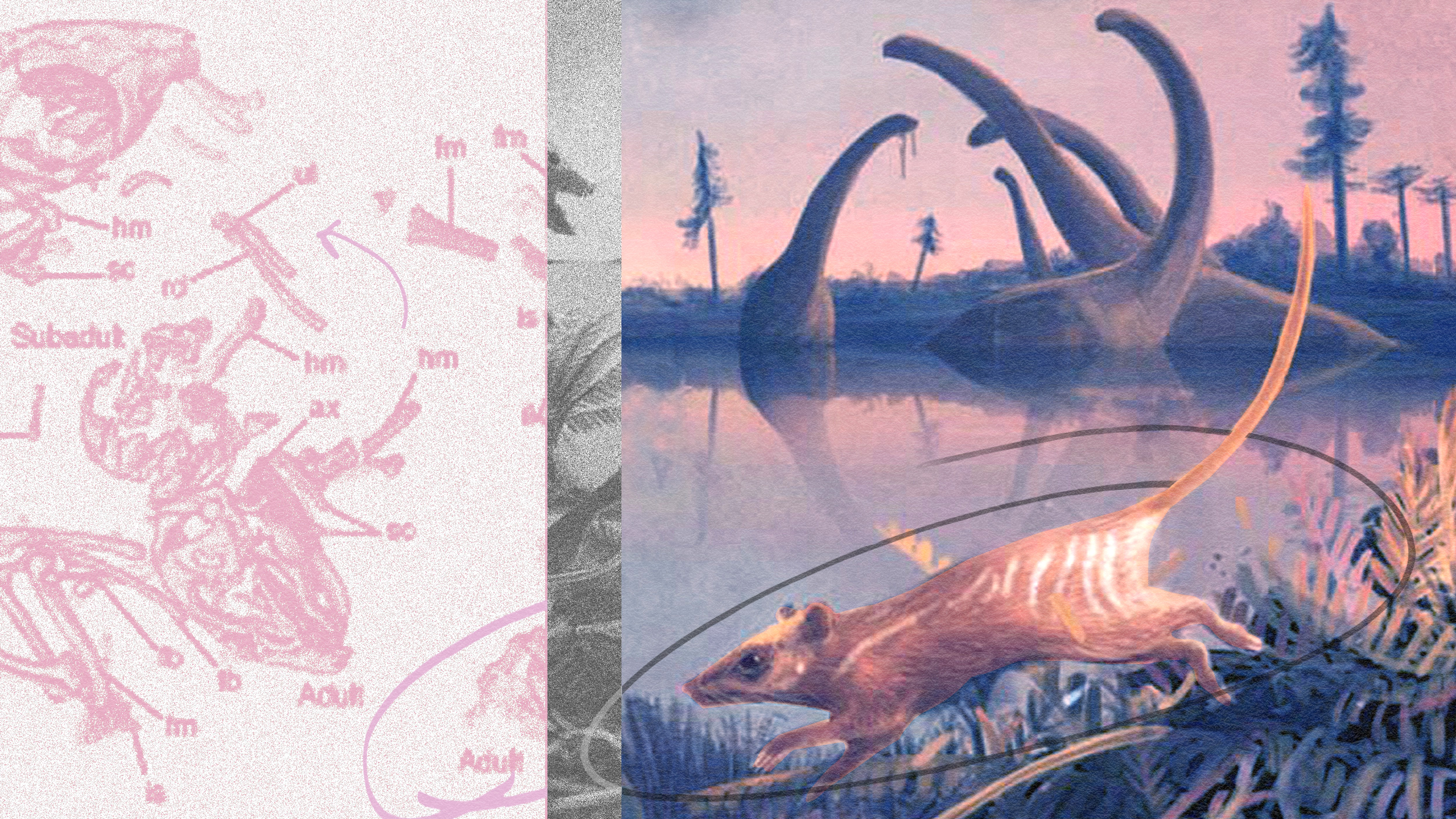LUCY COOKE: So I think inaccurate portraits of animals can lead to ineffective conservation plans. For example, take the panda. So here is an animal that is hugely adored and hugely anthropomorphized. Pandas are basically cute crack. They trigger our reward centers into releasing chemicals that make us want to nurture, because the panda looks a little bit like a toddler stumbling around, so it fires off this instinct in us — so we're kind of helpless not to love it. And we have infantilized pandas, we think that they are completely helpless and they can't survive without our intervention. And this is, I think, complete rubbish.
There are two pandas, you see. There is the wild panda, which is a secret stud with a taste for flesh and beautifully evolved to survive in its unique environment. Then there is a captive panda. Now, the captive panda we all are very familiar with as a creature which doesn't really like to reproduce, it's a pretty helpless creature.
But that's because animals in captivity — it's incredibly hard to get animals in captivity to breed. Animals have a wide range of environmental and behavioral cues that are necessary in order to get them in the mood — it's the animal equivalent of a glass of wine and a bit of Barry White. And if you don't get that right, if you don't know what that is, then it's going to be very hard to get them to reproduce in captivity. In the case of pandas, pandas actually occupy a surprisingly large range, and although they are quite solitary as creatures, they advertise their availability, as it were, on these trees that act as kind of notice boards. They're a bit like panda Tinder, if you like. The female, when she comes into eustrus, which is, as we know, a very narrow window, she will rub herself and her scent against one of these message-board trees and then that will draw males in to also leave their message to sort of say, "Hey what about me?" and leave their advert.
Now, their advert that they leave is a scented advert, it's included in their urine. So the females like males that can squirt their urine the highest up a tree. So males engage in what can only be described as a sort of urinary Olympics in order to squirt their pee as high up the tree as possible. And the scientific paper that exposed this has got this fantastic terminology in it, that there are a plethora of positions that the panda adopts from squat to leg kick to even handstand in order to get their pee highest up the tree. And then the female will then choose which male she wants. Now it's a very different situation from being in a zoo, where two pandas are plonked together in a concrete environment and expected to reproduce. And of course that fails. So we then have this opinion and it becomes very popular, we love to read about how useless pandas are at sex. I think it makes us feel better about ourselves, quite frankly. I think it helps us feel superior, actually.
And so those stories are incredibly popular, and so we have this idea that there's this bear that is somehow hopeless in this evolutionary mishap that, unless we micromanage its life, isn't going to survive. When in actual fact in the wild the panda is doing just fine. They find mates and when they do find mates they have been observed having sex up to 40 times in a single afternoon. So the female panda's narrow window of fertility, which is always ridiculed as being this sort of problem, might actually just be a means of controlling the population size, because the male panda is in fact so virile. Panda sperm is ten to 100 times more dense than human sperm. They are virile creatures. They are not hopeless evolutionary losers.
So the problem with a lot of Chinese panda conservation is that it revolves around captive breeding. And the Chinese have become extremely good at breeding pandas in captivity – not necessarily because they've worked out how to get pandas in the mood, that they've worked out what that panda equivalent of Barry White is, but it's actually because they're using artificial insemination in a lot of cases, which is a pretty eye-watering way of reproducing, but it's extremely effective. I visited some of these panda breeding centers in China, I went about ten years ago, and I was astonished when I visited because they were these sort of brutalist concrete buildings – they didn't seem anything like the mountainous bamboo forests where the pandas were from, and yet they were producing these bumper crops of baby pandas.
Now the reason why they're so successful is because they're using artificial insemination, and a lot of the pandas give birth to twins and they keep both twins alive and they'll keep switching the pandas, the twins around so that both twins stay alive, but neither really gets to stay with its mother. And then the pandas are then – these baby pandas, there's always, always these ridiculous photos that go completely viral of men dressed in blue, holding masses of pandas, or baby pandas all playing together on slides or whatever, but this is a totally unnatural situation. In the wild, a female panda she might give birth to twins, but probably only one of them is going to survive. And then her and her cub will spend a year or more together in the wild while the cub watches and learns how to be a wild panda from its mother. Here you have, in captivity, a completely different situation. You have all these baby pandas being reared together in a creche and there are no wild pandas there teaching them how to be wild pandas. And of course this is the problem: it's that animals might physically be there, but it's the behavior that makes an animal as well, and the behavior has to be – some behavior is innate, of course, but a large amount of behavior is learned. And so these pandas that are bred in these, what are effectively panda mills, they look like pandas but they aren't really pandas, because they don't know how to behave like pandas.
So when they are released into the wild, they don't know how to behave. Although they're fairly solitary they're still social enough that pandas need to know how to attract a mate, how to deal with a rival male whose territory you stepped on. If they haven't learned how to behave in that way then they're never going to survive. And in fact the first captive-raised panda that was released by the Chinese, it was unfortunately called Lucky, but it was anything but, because it ended up being savaged to death by wild pandas. It's difficult because these captive bred populations are now a long line of animals that have been bred in captivity; their wildness is sort of disappearing. And with this in mind the Chinese government has experimented more recently with trying to raise some pandas further away from human contact, and so they've got humans dressed in panda costumes pushing around stuffed leopards on wheels as a way of sort of teaching them about predators. I've seen that was a big spread in National Geographic, in fact. It makes a fantastic photo story. It's a funny thing, isn't it? People dressed as pandas teaching pandas how to be pandas, but it's complete nonsense. Of course they can't! I feel like these stories are hugely popular: bumper crops of baby pandas, people dressed as pandas teaching pandas how to be pandas, "We're saving them! We're sorting this problem. Look, science has got the answer. It's all okay. You're all all right at home. Don't worry about it. Carry on doing what you're doing. It's all getting sorted."
But it isn't, it isn't getting sorted, and that is not the answer. The answer is just the opposite: Leave them alone. Leave them alone in their territory and let them get on with doing what they need to do. Let them go on with living their lives and surviving like they have done for many millennia.





